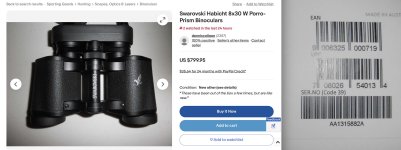What are the two best birding binoculars you have used that controlled glare the best, and what are the two worst you have used for glare? Glare control is very important in a birding binocular because there are so many times when you are looking close to the sun, or you are looking up at odd angles and glare and sometimes veiling glare will destroy your view. What have you noticed that affects glare? Do binoculars with bigger aperture control glare better? Do WA binoculars have more glare than binoculars with a smaller FOV? Do some brands of binoculars control glare better than others? Let's talk about glare and what you can do to control it and get rid of it. Here are my choices for the two best and the two worst binoculars for glare.
Best Binoculars for Controlling Glare.
1) Zeiss FL 8x56
2) Swarovski SLC 8x56
Worst Binoculars for Controlling Glare.
1) Nikon M7 8x30
2) Swarovski Habicht 8x30 W
Best Binoculars for Controlling Glare.
1) Zeiss FL 8x56
2) Swarovski SLC 8x56
Worst Binoculars for Controlling Glare.
1) Nikon M7 8x30
2) Swarovski Habicht 8x30 W







